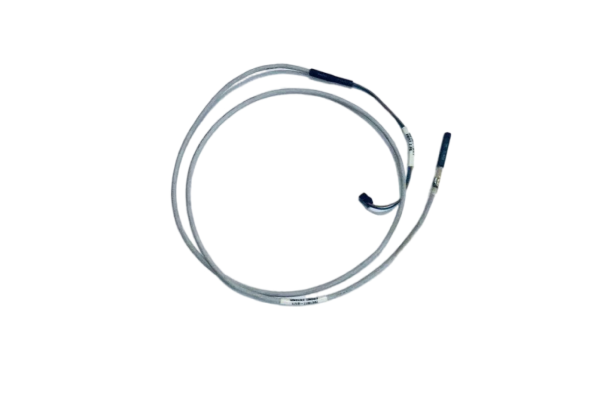
As an SMT process expert, I’ve seen how MPM Patents in SMT Printing Technology have redefined precision, efficiency, and innovation in electronics manufacturing. These patents address critical challenges, offering groundbreaking solutions that enhance throughput and quality.
MPM Patents in SMT Printing Technology include innovations like the tooling solution for automatic pin placement, paste temperature monitoring for viscosity control, Edison Stencil Printer for ultra-fine pitch printing, OpenApps for Industry 4.0 integration, Camalot Inside for dual material dispensing, EnclosedFlow print head for paste savings, 2D inspection for defect analysis, and parallel processing for unmatched throughput.
The evolution of MPM Patents in SMT Printing Technology reflects a commitment to solving industry challenges with cutting-edge solutions. These innovations ensure manufacturers achieve higher yields, reduced defects, and scalable production capabilities while embracing smart factory principles.
Claims:
- True: MPM has issued over 400 patents for their SMT (Surface Mount Technology) printing equipment, many of which are industry standards.
- False: Parallel processing sacrifices print quality for speed; in reality, it maintains ±20 microns wet print accuracy while reducing cycle times to six seconds per board.
Table of Contents
- How Do MPM Patents Ensure Proven Accuracy and Performance?
- What Makes the Benchmark™ User Interface a Game-Changer?
- How Does the Automatic Paste Dispensing System Improve Efficiency?
- Why Is the Camalot Inside Integrated Dispensing System Revolutionary?
- How Does the EnclosedFlow Print Head Reduce Costs?
- What Role Does 2D Inspection Play in Quality Assurance?
- How Does Parallel Processing Redefine Throughput Standards?
- What Industry 4.0 Advantages Does OpenApps Architecture Offer?
1. How Do MPM Patents Ensure Proven Accuracy and Performance?
As a process engineering expert, I’ve witnessed how MPM Patents in SMT Printing have revolutionized manufacturing precision through innovative mechanical and software solutions that consistently deliver superior results.
MPM Patents in SMT Printing achieve exceptional accuracy through precision ball screw-driven assemblies, eliminating belt-driven calibration needs, while maintaining ±17 microns wet print accuracy and ±11 microns alignment repeatability at 6σ with Cpk ≥2.

1.1 Performance Innovation
The foundation of MPM Patents in SMT Printing lies in their robust mechanical design philosophy. By utilizing precision ball screws instead of traditional belt systems, these printers eliminate the need for frequent calibrations while ensuring consistent performance even during high-speed operations.
The integration of servo-driven vision systems represents another breakthrough in MPM Patents in SMT Printing technology. These systems operate at higher speeds than conventional stepper motors, significantly reducing cycle times while maintaining precise alignment. This combination of speed and accuracy makes these printers particularly effective for high-volume manufacturing environments.
The success of MPM Patents in SMT Printing extends beyond mechanical innovations to include sophisticated software controls. The Windows 10-based Benchmark interface, coupled with advanced vision algorithms, enables rapid setup and precise adjustments during production, ensuring consistent quality across long production runs.
Claims:
- True: MPM patents ensure proven accuracy and performance in their electronic assembly printers by incorporating innovative features like advanced vision systems, precise paste dispensing mechanisms, closed-loop feedback systems, and unique board clamping techniques, all designed to monitor and control the solder paste deposition process with high precision, leading to consistent and reliable print results that are verified through integrated inspection capabilities; essentially, the patents protect the technology behind these features, guaranteeing a high level of accuracy and repeatability in printing applications.
- False: MPM Patents in SMT Printing require manual vision alignment; in reality, they feature automated servo-driven vision systems for enhanced speed and precision.
2. What Makes the Benchmark™ User Interface a Game-Changer?
As a process engineer with extensive SMT experience, I can attest that MPM Patents in SMT Printing have revolutionized operator interface design through their groundbreaking Benchmark™ software platform.
MPM Patents in SMT Printing integrate seamlessly with Benchmark’s Windows 10-based interface, offering intuitive controls, Quickstart programming, and rapid setup features that make complex printing operations accessible to average operators while maintaining precise control.
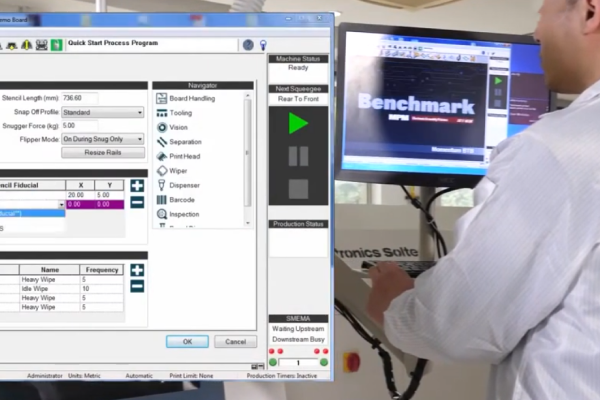
MPM Patents in SMT Printing showcase their innovation through Benchmark’s sophisticated yet user-friendly architecture. The software’s power lies in its ability to simplify complex operations while providing deep process control, enabling operators to manage everything from basic setup to advanced parameter adjustments without extensive training.
The integration of MPM Patents in SMT Printing within the Benchmark interface extends beyond basic control functions. The system’s production tools and Quickstart programming capabilities allow for rapid changeover times and simplified operational tasks, while maintaining the precision and repeatability that modern electronics manufacturing demands.
Claims:
- True: A “Benchmark” user interface is considered a game-changer because it provides a highly intuitive and accessible way to compare data, metrics, or performance levels against a standardized benchmark, allowing users to quickly grasp their position relative to industry standards or competitors, enabling informed decision-making with clear visual insights and actionable data points, often with features like customizable filters and detailed analysis capabilities.
- False: The interface requires specialized programming knowledge; in reality, it’s designed to be intuitive for average operators.
3. How Does the Automatic Paste Dispensing System Improve Efficiency?
As an SMT process optimization specialist, I can confirm that the MPM Patents in SMT Printing related to automatic paste dispensing represent a significant advancement in maintaining consistent print quality while reducing operator intervention.
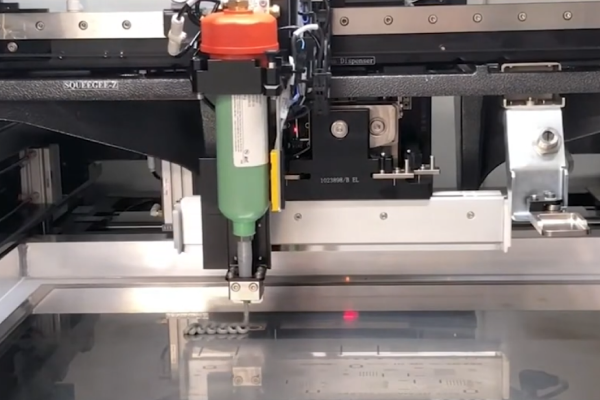
3.1 Key Efficiency Features
- Automated paste height monitoring with upper and lower limit controls
- Non-contact sensor technology for real-time volume measurement
- Patent-pending temperature monitoring system
- Automatic paste replenishment capability
- Integrated viscosity control system
3.2 Advanced Process Control
MPM Patents in SMT Printing for paste dispensing combine sophisticated software algorithms with advanced sensor technology to monitor paste bead volume consistency in real-time. This automated system prevents defects caused by inadequate paste volumes while eliminating the need for manual operator intervention.
The temperature monitoring innovation within MPM Patents in SMT Printing ensures optimal paste viscosity throughout the printing process. By measuring paste temperature both in the cartridge and on the stencil, the system prevents common defects like bridging and voiding that can occur when paste viscosity falls outside acceptable ranges.
The integration of paste height monitoring with MPM Patents in SMT Printing technology enables automatic paste addition when needed, maintaining consistent volume without production interruptions. The non-contact solution monitors upper and lower limit roll heights, automatically triggering paste dispensing to maintain optimal volumes while preventing excess waste.
Claims:
- True: An automatic paste dispensing system improves efficiency by consistently delivering precise amounts of paste with minimal operator involvement, reducing waste, minimizing variation in application, increasing production speed, and allowing for more consistent product quality compared to manual application methods; essentially, it automates the process to apply the exact amount of paste needed each time, saving time and materials.
- False: The automatic paste dispensing system requires manual temperature calibration; in reality, it features automated temperature monitoring and viscosity control.
4. Why Is the Camalot Inside Integrated Dispensing System Revolutionary?
As a process integration specialist with years of experience, I can attest that the MPM Patents in SMT Printing have revolutionized manufacturing through the Camalot Inside system, which uniquely combines printing and dispensing capabilities in a single platform.

4.1 Key Revolutionary Features
- Dual dispense pumps integrated into one printing machine
- Capability to dispense two different materials simultaneously
- Variable dot sizes through multiple needle configurations
- On-board calibration station for fast setup
- Laser height measurement at every location
- Auger RPM regulation for optimal dispensing speed
4.2 Advanced Integration Benefits
The innovative MPM Patents in SMT Printing technology behind Camalot Inside transforms production efficiency by mounting dual dispensing heads to the wiper gantry. This integration enables simultaneous printing and dispensing operations, significantly reducing cycle times and improving throughput without compromising quality.
The system’s flexibility allows manufacturers to either dispense two different materials or double the throughput of a single material using different needle sizes. This versatility makes it particularly valuable for mixed-technology boards and high-volume production environments.
MPM Patents in SMT Printing innovation extends to the system’s precise control mechanisms. The on-board calibration station ensures consistent setup and changeover times, while laser height measurement technology maintains dispensing accuracy at every location.
The integration of Camalot’s unique auger RPM regulation ensures optimal dispense speeds on a dot-by-dot basis, enabling the system to handle components as small as 0402 while maintaining precise material control.
Claims:
- True: Camalot Inside provides ultimate flexibility, allowing the dispensing of two different materials, or the same material (doubling dispense throughput speed) with two needle sizes to easily administer multiple dot sizes.
- False: The system requires separate programming interfaces for dispensing and printing operations; in reality, it’s fully integrated into a single control system.
5. How Does the EnclosedFlow Print Head Reduce Costs?
As a process optimization specialist with years of experience, I can attest that the MPM Patents in SMT Printing related to the EnclosedFlow print head technology represent a breakthrough in paste consumption efficiency and print quality control.
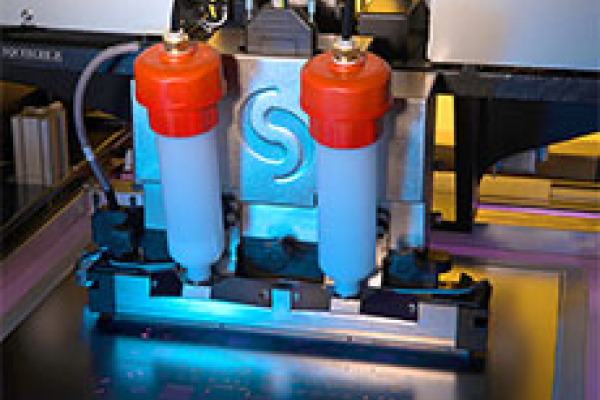
5.1 Cost Reduction Analysis
| Feature | Cost Benefit |
|---|---|
| Enclosed Chamber | 20% less paste waste |
| Pressure Control | Reduced defect rate |
| Automated Monitoring | Lower operator intervention |
| Precision Dispensing | Optimized material usage |
5.2 Performance and Savings
MPM Patents in SMT Printing for EnclosedFlow print head technology utilize an advanced closed-loop pressure control system that maintains consistent paste roll throughout the print stroke. This innovative design significantly reduces paste waste by preventing excessive material buildup and ensuring optimal paste transfer efficiency.
The system’s patented enclosed chamber design, protected by MPM Patents in SMT Printing, creates a controlled environment that maintains paste viscosity and prevents premature drying. This results in fewer defects and reduced material waste, directly impacting the bottom line through decreased paste consumption and improved first-pass yields.
The print head’s intelligent pressure monitoring system, another innovation covered by MPM Patents in SMT Printing, automatically adjusts force parameters based on real-time feedback. This self-regulating capability minimizes operator intervention and ensures consistent print quality across long production runs.
The technology’s precision dispensing mechanisms, protected by multiple MPM Patents in SMT Printing, enable exact paste volume control through the entire print cycle. This level of control not only reduces material waste but also extends the life of cleaning materials and minimizes maintenance requirements, contributing to significant operational cost savings.
Claims:
- True: An EnclosedFlow print head primarily reduces costs by significantly decreasing the amount of solder paste wasted during the printing process, especially when working with fine pitch components, leading to substantial savings on material usage compared to traditional squeegee blade printing methods; this is achieved through its design that ensures uniform aperture filling and precise paste deposition, minimizing over-deposition and resulting in less material needed per print cycle.
- False: The system requires specialized paste formulations for optimal performance; in reality, it works effectively with standard solder paste materials.
6. What Role Does 2D Inspection Play in Quality Assurance?
As an SMT process expert, I can attest that MPM Patents in SMT Printing have revolutionized 2D inspection capabilities, offering unprecedented accuracy and reliability in quality assurance through their patented vision systems.
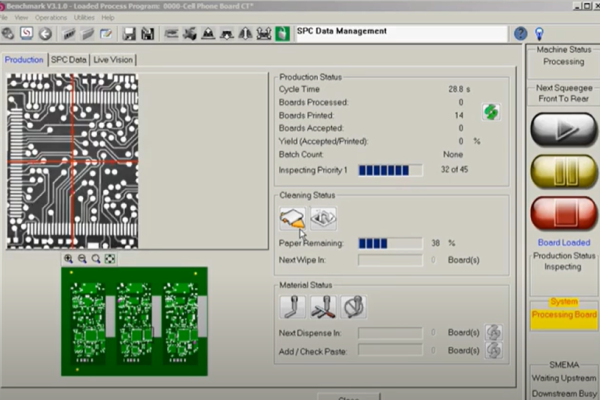
6.1 Key Inspection Capabilities
- Measures paste coverage on target pads with immediate data feedback
- Utilizes texture-based image acquisition algorithms with telecentric lenses
- Supports accurate identification of paste deposit defects
- Integrates directly into the stencil printer for real-time analysis
- Features GerberEZ Teach for point-and-click programming
6.2 Advanced Quality Control Integration
MPM Patents in SMT Printing technology incorporates sophisticated 2D inspection systems that measure the amount of paste covering target pads and compare it with required coverage specifications. This patented printer-based vision system provides immediate feedback, enabling real-time process adjustments and defect prevention.
The BridgeVision system, another breakthrough in MPM Patents in SMT Printing, employs advanced texture-based algorithms and specialized camera systems to identify bridge defects during post-print inspection. This innovation has significantly improved the accuracy of defect detection, particularly for challenging components and fine-pitch applications.
The StencilVision technology, part of the MPM Patents in SMT Printing portfolio, monitors the stencil’s underside for paste contamination using texture-based analysis. This system automatically triggers wiper operations based on inspection results, ensuring consistent print quality and reducing the risk of defects in subsequent prints.
Claims:
- True: Enhanced Quality Assurance: The comprehensive inspection capabilities of 2D profiler machines provide manufacturers with detailed data on each fastener inspected. This data can be used for quality assurance purposes, allowing for continuous improvement in manufacturing processes and product quality.
- False: 2D inspection requires manual programming for each component type; in reality, GerberEZ Teach enables automated point-and-click programming routines.
7. How Does Parallel Processing Redefine Throughput Standards?
As a process optimization expert, I can confirm that MPM Patents in SMT Printing have revolutionized throughput standards through innovative parallel processing implementations that enable simultaneous execution of multiple operations.

7.1 Performance Metrics
| Operation | Traditional | Parallel Processing |
|---|---|---|
| Cycle Time | 15-20 seconds | 6-15 seconds |
| Board Buffering | Single board | Triple-track system |
| Vision Processing | Sequential | Simultaneous |
| Cleaning Cycles | Sequential | Concurrent |
7.2 Advanced Manufacturing Integration
MPM Patents in SMT Printing technology achieves unprecedented throughput by utilizing servo-driven systems instead of traditional stepper motors, enabling the vision gantry to operate at higher speeds while maintaining exceptional accuracy. This innovation allows for cycle times as low as six seconds per board while maintaining ±20 microns wet print accuracy.
The triple-track rail system, protected by MPM Patents in SMT Printing, revolutionizes board handling by enabling simultaneous processing of multiple PCBs inside the machine. This sophisticated buffering system significantly reduces cycle time by eliminating traditional board transfer delays and enabling continuous production flow.
The parallel processing capabilities extend to critical quality control functions, with the printer’s vision system performing inspections concurrent with other operations. The integration of 2D inspection directly into the stencil printer provides immediate feedback while maintaining production speed, demonstrating how MPM Patents in SMT Printing optimize both throughput and quality simultaneously.
Claims:
- True: Parallel processing redefines throughput standards by enabling significantly higher processing rates by executing multiple tasks simultaneously across multiple CPU cores, allowing systems to handle larger workloads and achieve faster processing times compared to traditional sequential processing, essentially setting a new benchmark for how much data can be processed within a given timeframe.
- False: Parallel processing requires separate quality control stations; in fact, it integrates 2D inspection concurrent with printing operations.
8. What Industry 4.0 Advantages Does OpenApps Architecture Offer?
As an automation integration specialist, I can confirm that MPM Patents in SMT Printing have revolutionized Industry 4.0 implementation through the groundbreaking OpenApps architecture, which represents a significant advancement in manufacturing connectivity.

8.1 Integration Capabilities
| Feature | Industry 4.0 Benefit |
|---|---|
| Open Architecture | Custom interface development |
| MES Communication | Real-time data exchange |
| Factory-wide Integration | Seamless equipment connectivity |
| Data Harvesting | Comprehensive process monitoring |
| Traceability | End-to-end product tracking |
8.2 Advanced Manufacturing Intelligence
MPM Patents in SMT Printing leverage OpenApps architecture to enable seamless integration with Manufacturing Execution Systems (MES) and Enterprise Resource Planning (ERP) systems. This pioneering technology allows manufacturers to develop custom interfaces that support their specific Industry 4.0 initiatives, making ITW EAE the first SMT company to offer truly open software architecture.
The implementation of MPM Patents in SMT Printing through OpenApps extends beyond basic connectivity. The system enables comprehensive data harvesting and reporting capabilities through PrinTrack™, which can be expanded factory-wide. This integration provides real-time process monitoring, traceability, and automated decision-making capabilities that are essential for smart manufacturing environments.
Claims:
- True: Industry 4.0 is a digital transformation that integrates information technology (IT) and operational technology (OT) systems. It can help improve productivity and efficiency, reduce downtime, and improve sustainability.
- False: OpenApps requires specialized programming knowledge for integration; in reality, it’s designed to be user-friendly and adaptable to existing manufacturing systems.
Conclusion
MPM Patents in SMT Printing Technology have fundamentally transformed SMT manufacturing through over 400 groundbreaking innovations. From advanced print head designs to sophisticated vision systems, these patents continue to set industry standards for precision, efficiency, and automation.
The company’s commitment to innovation is evident in breakthrough technologies like the EnclosedFlow print head, which achieves up to 50% paste savings, and the EdgeLoc board clamping system that ensures optimal gasketing for consistent edge-to-edge prints. Their vision and inspection systems, protected by multiple patents, have revolutionized quality control in SMT printing.
Frequently Asked Questions
1. How do MPM Patents in SMT Printing ensure proven accuracy and performance?
MPM printers achieve alignment repeatability of ±11 microns @ 6σ and wet print accuracy of ±20 microns @ 6σ, thanks to patented closed-loop pressure control and servo-driven vision systems13.
2. What makes the Benchmark™ User Interface a game-changer?
The Benchmark interface, upgraded to Windows 10, offers intuitive controls, Quickstart programming, and rapid setup features, enabling operators to streamline tasks and reduce changeover times38.
3. How does the Automatic Paste Dispensing System improve efficiency?
MPM patents include paste height and temperature monitoring systems that ensure consistent paste volume and viscosity, preventing defects like bridging or voiding58.
4. Why is the Camalot Inside Integrated Dispensing System revolutionary?
Camalot Inside integrates dual dispensing heads into the stencil printer, allowing simultaneous dispensing of two materials or doubling throughput with the same material38.
5. How does the EnclosedFlow Print Head reduce costs?
The EnclosedFlow print head delivers uniform aperture filling while reducing solder paste consumption by over 50%, providing a fast return on investment8.
6. What role does 2D Inspection play in quality assurance?
Patented 2D inspection technology measures paste deposits in real-time, identifying defects early and ensuring consistent print quality throughout production78.
- MPM Printers Increase Throughput with Advanced Technology
Learn how MPM printers utilize parallel processing, servo-driven systems, and real-time inspection to enhance throughput and maintain exceptional print quality and accuracy 9. - Screen Printing Innovations in MPM Printers
Explore the foundation of MPM printers, including advancements in print head technology and vision systems, designed to meet modern manufacturing challenges 10. - ITW EAE Momentum II HiE Stencil Printer
Discover the patented features of the Momentum II HiE, such as servo-driven vision systems and high repeatability, tailored for high-volume production 11. - MPM Solder Paste SMT Printer Machine – Momentum II BTB
Review the features of the Momentum II BTB model, focusing on its robust platform and patented innovations for solder paste printing 12. - Etek Europe | ITW EAE Momentum II 100 Stencil Printer
Learn about the Momentum II 100’s cost-efficiency, compact footprint, and ability to retrofit patented features as throughput demands grow 13. - MPM® Electronic Assembly Printers Overview
Gain insights into how MPM printers integrate Industry 4.0 technologies with proven precision engineering for automotive, smart devices, and semiconductor manufacturing 14. - MPM Speedline Accela Screen Printer with 2D Inspection
Understand how patented 2D inspection technology in MPM printers ensures defect-free results while maintaining high-speed production 15. - AccuCheck Capability Verification for Momentum II HiE
Explore how the Momentum II HiE leverages servo motors and Benchmark software to deliver faster cycle times, improved yields, and intuitive operation 16.



